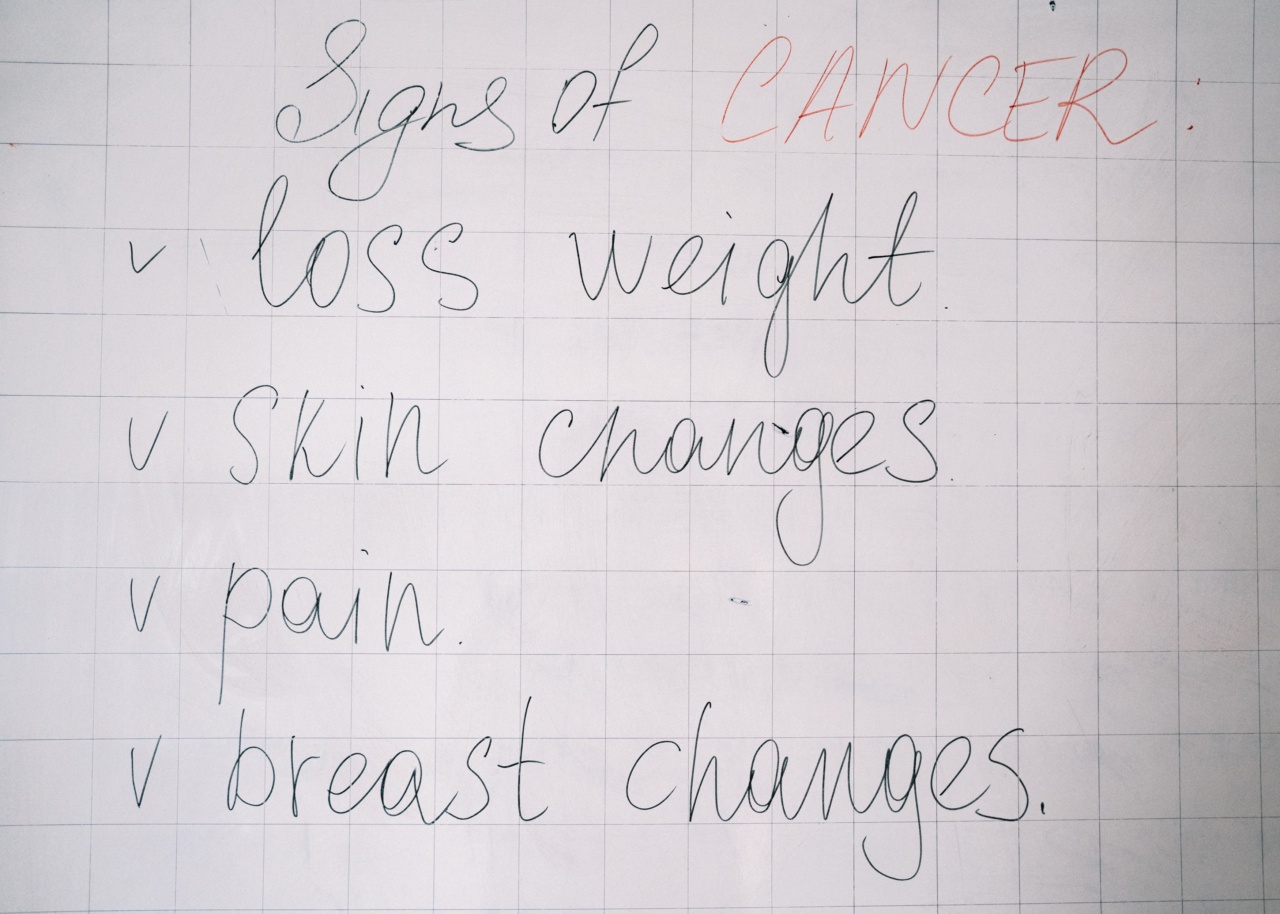Testicular cancer is a rare form of cancer that affects the testicles, which are the male reproductive glands located in the scrotum.
It typically occurs in young and middle-aged men, with the highest incidence rates seen in individuals between the ages of 15 and 35. While testicular cancer is relatively uncommon compared to other types of cancer, it is crucial to be aware of the symptoms as early detection is vital for successful treatment and improved outcomes.
Recognizing the signs and knowing when to seek medical attention can make a significant difference in the prognosis of testicular cancer.
1. Understanding Testicular Cancer
Before delving into the symptoms of testicular cancer, it is essential to have a basic understanding of what testicular cancer entails. Testicular cancer develops when abnormal cells in the testicles grow and multiply uncontrollably, forming a tumor.
These tumors can be benign (non-cancerous) or malignant (cancerous). Malignant tumors have the potential to invade nearby tissues and spread to other parts of the body, a process known as metastasis.
Testicular cancer is categorized into different types, including:.
- Seminomas: These tumors typically occur in men between the ages of 25 and 45 and grow slowly. They are highly sensitive to radiation therapy, making them easier to treat.
- Non-seminomas: This category includes several subtypes of tumors, including embryonal carcinoma, yolk sac carcinoma, teratoma, and choriocarcinoma. Non-seminomas tend to grow and spread more rapidly than seminomas.
2. Common Symptoms of Testicular Cancer
Recognizing the symptoms of testicular cancer is crucial for early detection and prompt treatment. Although some men may experience no symptoms at all, others may notice certain changes in their testicles.
Common symptoms associated with testicular cancer include:.
- Lump or swelling in the testicle: The most common symptom of testicular cancer is the presence of a painless lump or swelling in one or both testicles. It may feel like a hard mass or a small pea-sized bump.
- Testicular pain or discomfort: Some men may experience dull aches, heaviness, or discomfort in the testicles or scrotum. The pain may originate from the affected testicle or radiate to the groin or lower abdomen.
- Changes in testicular shape or size: Testicular cancer may cause the affected testicle to become larger or have an irregular shape. It is essential to be aware of any noticeable changes in size, firmness, or texture.
- Heaviness or dull ache in the lower abdomen or groin: Testicular cancer can sometimes cause discomfort in the lower abdomen or groin area, without any noticeable changes in the testicles.
- Fluid accumulation in the scrotum: In some cases, testicular cancer can lead to the accumulation of fluid in the scrotum, causing swelling or a lump-like sensation.
- Back pain or shortness of breath: Advanced stages of testicular cancer where it has spread to other parts of the body may present symptoms such as lower back pain, chest pain, or shortness of breath.
3. When to Seek Medical Attention
If you notice any of the aforementioned symptoms or any other unusual changes in your testicles, it is crucial to seek medical attention promptly. While these symptoms do not necessarily indicate testicular cancer, they should not be ignored.
It is always better to be safe and get a professional evaluation by a healthcare provider.
Your healthcare provider will conduct a thorough physical examination and may order additional tests, including:.
- Ultrasound: An ultrasound uses sound waves to create images of the scrotum, allowing the healthcare provider to identify any abnormal masses or tumors.
- Blood tests: Blood tests measure the levels of certain tumor markers, such as alpha-fetoprotein (AFP), human chorionic gonadotropin (HCG), and lactate dehydrogenase (LDH). Elevated levels of these markers may indicate the presence of testicular cancer.
- Biopsy: If a lump or mass is detected, a biopsy may be performed to remove a small sample of tissue for further examination under a microscope. A biopsy can confirm the diagnosis of testicular cancer and help determine its type and stage.
4. Testicular Self-Examination (TSE)
Performing regular testicular self-examinations (TSE) is an important practice to detect any changes or abnormalities in the testicles. It is recommended that men begin performing TSE in their late teens and continue throughout their adulthood.
A monthly self-examination allows you to become familiar with the normal size, shape, and weight of your testicles, making it easier to identify any changes that may occur.
To perform a testicular self-examination:.
- Stand in front of a mirror and observe for any swelling, changes in size, or irregularities in shape.
- Hold your scrotum in the palm of your hand and gently feel each testicle using your fingers. Roll the testicle between your thumb and fingers to check for any lumps, hardness, or swelling.
- Repeat the process with the other testicle.
- If you notice any changes or abnormalities, seek medical attention promptly.
5. Treatment and Prognosis
The treatment options for testicular cancer depend on various factors, including the type and stage of cancer, as well as the individual’s overall health. The most common treatment approaches for testicular cancer include:.
- Surgery: Surgery is often the initial step in treating testicular cancer. The surgical procedure involves removing the affected testicle, a procedure known as a radical inguinal orchiectomy. In some cases, the surgeon may also remove nearby lymph nodes to analyze them for the presence of cancer cells.
- Radiation therapy: Radiation therapy uses high-energy X-rays or other types of radiation to destroy cancer cells. It may be used after surgery to eliminate any remaining cancer cells or as the primary treatment for some types of testicular cancer.
- Chemotherapy: Chemotherapy involves the use of drugs to kill cancer cells throughout the body. It is commonly used for treating testicular cancer that has spread beyond the testicles or for aggressive forms of the disease.
- Surveillance: In certain cases, such as early-stage testicular cancer, surveillance or active monitoring may be recommended. Regular check-ups, blood tests, and imaging studies are performed to monitor any potential recurrence or progression of the cancer.
The prognosis for testicular cancer is generally favorable, with high cure rates, especially when diagnosed and treated at an early stage. The five-year survival rate for localized testicular cancer is approximately 99%.
However, the prognosis may vary depending on the specific type and stage of cancer.
6. Importance of Awareness and Early Detection
Knowing the symptoms of testicular cancer and being aware of the importance of early detection can save lives. Testicular cancer is highly treatable, and the chances of successful treatment increase significantly when the disease is detected early.
Regular self-examinations and prompt medical attention for any concerning signs or symptoms are vital steps in ensuring early diagnosis and improved outcomes.
Conclusion
Testicular cancer is a relatively rare form of cancer that primarily affects young and middle-aged men.
While its occurrence is infrequent, understanding the symptoms and being proactive in seeking medical attention can greatly impact the prognosis and treatment outcomes.
By familiarizing oneself with the common signs, performing regular self-examinations, and promptly reporting any changes to healthcare professionals, the chances of early detection and successful treatment for testicular cancer increase significantly.





























